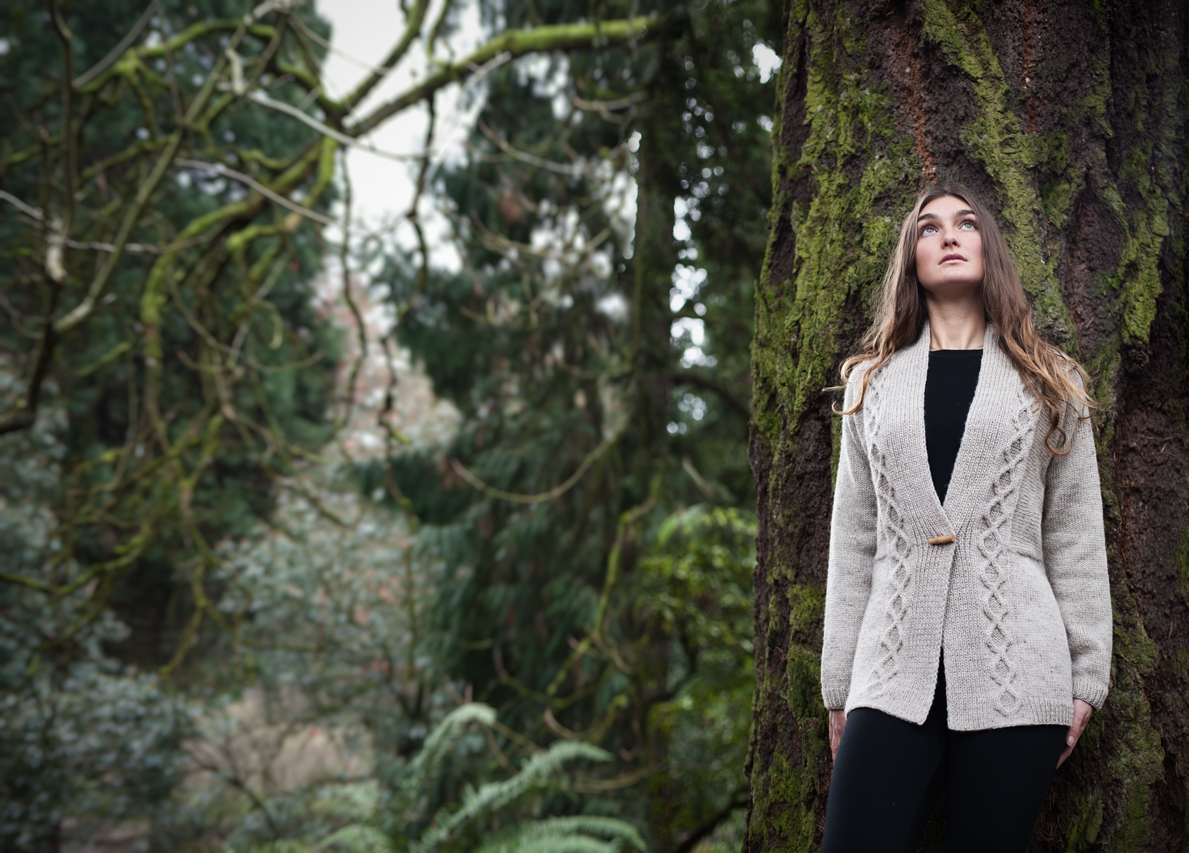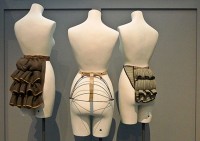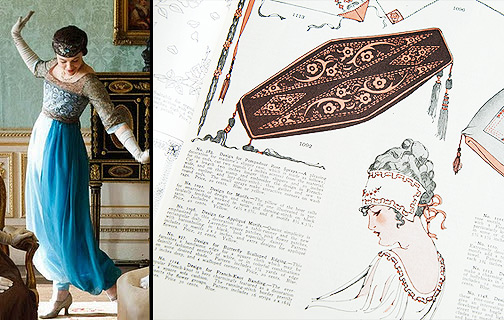Being ever so misty-eyed that Season 2 of Downton Abbey has wrapped here in the States doesn’t mean the story has ended but just a different king of chapter continues.
The Knitwear.
Knitwear from almost 100 years ago.

This collection is amazing for a couple of reasons – yes, the variety and exciting modern-looking constructions but also in the fast-forward way the evolution of the clothing matched the evolution of the culture…
Women were just being more Public.
They were going Outdoors more than ever before. They were playing Sports. The popularity of tennis & golf gave rise to the need for some mobility garments, stat.
 And now, sweaters and jackets appeared for women that allowed them the same range of movement that their brother golfers and swingers were enjoying.
And now, sweaters and jackets appeared for women that allowed them the same range of movement that their brother golfers and swingers were enjoying.
No more Mutton Sleeves; begone Bustles, farewell hemlines that dragged in the dirt.
Hello Norfolk-style sweaters and ankles!
Now, if you’ve seen any fox hunts on film, chances are you’ll recognize the Norfolk. “It was originally designed as a shooting coat that did not bind when the elbow was raised to fire.”
Range of Motion. Mobility. Action.
From 1917:

And something else happened that was very exciting: fashion equity.
Just like in the culture-at-large, the knitwear the Upstairs was wearing appeared Downstairs as well, almost to a T. You could make it…

Or, from the Spokesman Review, July 29, 1912 (!), you could buy it (here at the Kemp & Herbert Dept. Store, Spokeane, WA):

Here was the birth of Casual, where formality melded most neatly into Comfort, without losing style…
And this is what I find the very most exciting about clothing from this time: women moved away from being rather strictly ornamental to being At Large.
A small step, but, indeed, the journey begins…
Cheers & see you in Season 3?
…all in the series:
– Suffragette City Part 1
– Suffragette City Part 2
– Suffragette City Part 3
– Suffragette City Part 4
– Suffragette City Part 5
– Suffragette City Part 6













